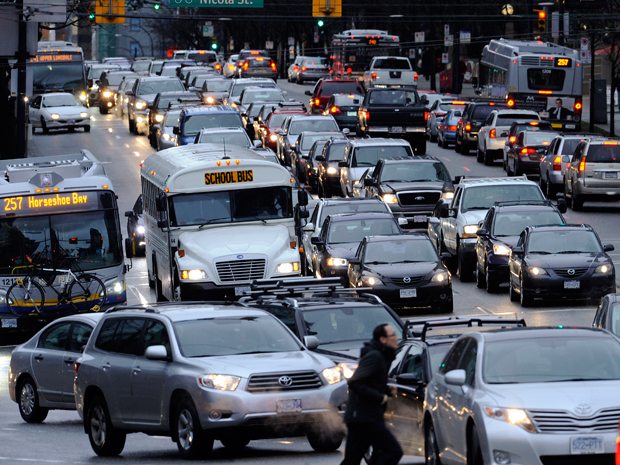Can Existing Revenue Sources Fund Metro Vancouver Transit?
Originally published in Vancouver Courier
The resounding defeat of the Congestion Improvement Tax by voters in the recent transit plebiscite was a blow to local government politicians who were counting on it as a new revenue source.
With no “plan B” to fall back on, members of the Mayors’ Council are threatening to go it alone on transit projects if the provincial government does not make TransLink more accountable and transparent.
Even business and community leaders are wringing their hands over the spectre of regional gridlock.
Perhaps it is time to end the post-plebiscite mourning period and refocus on the issue at hand, which is finding the money to fund transportation improvements.
If there are alternatives for funding this growth out there, one hopes that the mayors are all ears.
The Vancouver Green Party was out of the gate early advocating a new “citizen driven” public consultation process, but did not suggest any new funding solutions.
Getting buy-in from individual communities is nice to have, but the process alone could take years. Just look at how difficult it was to get a couple dozen Metro Vancouver mayors to agree on a plan.
If we are to avert a predicted crisis of traffic congestion and inadequate transit service — something the mayors have warned us about for several months — we must keep our minds open for ideas from unlikely sources.
From the outset the mayors have slammed the door shut on property tax as a revenue source. “We’ve got all kinds of strain on that,” claimed North Vancouver District Mayor Richard Walton, former chair of the Mayors’ Council. “It’s just not appropriate to continue to use property tax as a primary source.”
By contrast, Minister of Transportation Todd Stone has been unequivocal in his view that the mayors consider existing revenue tools to fund regional transportation. “The lever that affords [municipalities] the most flexibility obviously is the property tax,” says Stone.
Back on Jan. 16, the No TransLink Tax campaign tabled what they dubbed as “A Better Plan.” The No side enlisted a certified management accountant to crunch the numbers, but the mayors summarily shrugged off their plan.
No one from the Yes campaign formally refuted any of the No side’s calculations, which led me to ask if there is substance to their plan.
The No side’s analysis provides multiple scenarios to support the mayors’ plan, including increasing the length of time from 10 to 12 and 15 years for financing it, which reduces the annual cost significantly just as if you amortize your mortgage over a longer period.
In one of their propositions, the No side plan conservatively estimates annual revenue growth for municipalities to be slightly under five per cent. It claims that dedicating a fraction of that revenue growth — just .55 per cent — Metro Vancouver’s municipalities could meet financial targets they have set out for the mayors’ transportation plan.
By analyzing local government revenues and applying some modest fiscal discipline of less than one per cent per year, a third party showed the mayors how to fund transportation and transit growth in our region.
It begs the question why the Mayors’ Council never proposed the idea themselves of funding their plan through existing revenue sources. If they had done so, we could have saved the taxpayers millions for a costly plebiscite.
The Yes campaign frequently asserted that the No side wanted the region to do “nothing” for transit and transportation — which in hindsight was a misleading statement.
The No side put most of its energy into its anti-TransLink invective, which helped them to win the campaign and defeat the tax. It would be a shame, however, if their financial analysis did not get a second look.
In the lead up to the plebiscite the mayors repeatedly argued that property tax was “maxed out” as a revenue source. At the same time they argue that transit and transportation initiatives are a priority for the region.
It is always easier for local governments to ask for more revenue. Setting priorities for the dollars they have is the more difficult challenge.
Before anyone raises the prospect of raising taxes again, the public deserves to be certain existing sources are truly maxed out.



